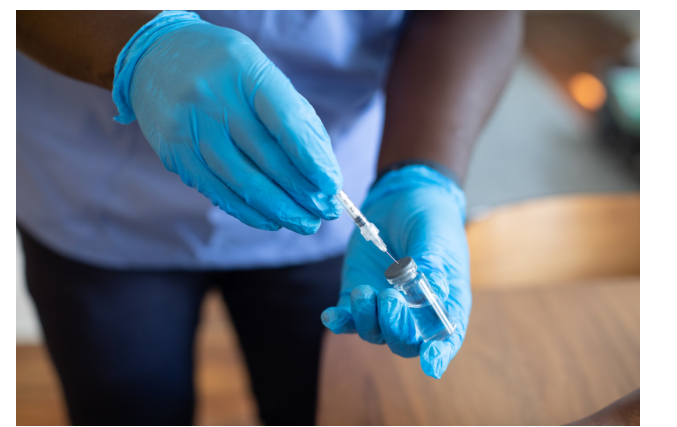Safety First: Essential Workwear and Footwear for Hazardous Environments
In hazardous work environments, wearing the right safety gear is critical. Whether working in construction, manufacturing, or outdoor industrial settings, proper workwear and footwear play a crucial role in protecting workers from potential hazards, enhancing safety, and improving performance. Selecting the right gear is not only about comfort; it’s about ensuring protection in demanding conditions.
This article highlights the essential features to consider when selecting workwear and footwear for hazardous environments, including protective clothing, reinforced footwear, and additional safety features. Mark’s Peterborough offers a wide selection of specialized workwear that prioritizes durability and safety, ensuring that workers are prepared for any environment.
Understanding the Risks in Hazardous Work Environments
Before diving into specific types of workwear and footwear, it’s important to understand the unique risks associated with hazardous environments. Each type of environment presents specific challenges that require tailored protection.
Common Hazards in High-Risk Jobs
- Impact and Falling Objects
Many jobs involve working with heavy machinery or in areas where objects can fall or roll. These hazards require protective headgear, durable work boots with reinforced toes, and strong gloves to guard against impact. - Chemical and Electrical Hazards
For those working around chemicals or electrical sources, wearing non-conductive, chemical-resistant clothing and footwear is essential to prevent contact burns, exposure, and electrical shocks. - Slippery and Uneven Surfaces
Slip-resistant soles are crucial for workers on wet or uneven surfaces, such as construction sites or manufacturing floors. Work boots with enhanced traction prevent slips and falls, minimizing accidents. - Extreme Temperatures
Jobs that expose workers to extremely hot or cold temperatures require specialized gear to maintain comfort and safety. Insulated clothing and heat-resistant gloves are common in such settings, helping workers avoid injury from temperature extremes.
Recognizing these potential hazards allows workers to select the most effective safety gear tailored to their specific environment.
Essential Workwear Features for Maximum Protection
Protective workwear is designed to shield workers from hazards, providing peace of mind and supporting compliance with safety regulations. High-quality workwear prioritizes protective features, durable materials, and practical design to ensure safety on the job.
Key Protective Features for Workwear
- High-Visibility Clothing
High-visibility (hi-vis) clothing is essential for workers in low-light or high-traffic environments, such as construction sites and road work areas. Look for clothing with reflective strips on jackets, vests, and pants to ensure maximum visibility. - Flame-Resistant (FR) Materials
Flame-resistant workwear is a must for those exposed to high heat, sparks, or fire hazards. FR clothing is treated to withstand flames without catching fire, protecting workers in environments like welding, electrical work, and chemical processing. - Chemical-Resistant Fabrics
For individuals working with chemicals or hazardous materials, chemical-resistant workwear provides a barrier against potential spills and splashes. Many chemical-resistant clothing options are made from materials like PVC or rubber, creating an impermeable layer between the worker and harmful substances. - Durable Reinforcements
Reinforced knees, elbows, and seams extend the durability of workwear, providing additional protection in high-wear areas. Double-stitching and ripstop fabrics ensure that clothing holds up even in the most rugged conditions.
At Mark’s Peterborough, you’ll find a variety of workwear designed to protect workers across multiple hazards, ensuring both safety and durability in demanding environments.
Choosing the Right Work Boots for Hazardous Conditions
Footwear is one of the most important pieces of safety gear for any hazardous environment. The right work boots not only provide comfort but also safeguard against impact, slips, and chemical exposure. Selecting boots with specific protective features can reduce the risk of foot injuries, helping workers perform confidently and securely.
Key Footwear Features for High-Risk Environments
- Steel or Composite Toe Protection
Steel-toed boots are essential in jobs where impact protection is necessary, as they prevent injury from falling objects or accidental compression. Composite toe boots, made from materials like Kevlar or carbon fiber, offer similar protection with a lighter weight, ideal for environments requiring long hours of standing or walking. - Slip-Resistant Soles
Slip-resistant soles are crucial for workers on slick or uneven surfaces. Boots with anti-slip technology, such as rubber or polyurethane outsoles, provide excellent traction, preventing slips and falls that could lead to injuries. - Waterproof and Chemical-Resistant Materials
Boots made from waterproof materials protect feet in wet environments, while chemical-resistant boots safeguard against spills and corrosive substances. Waterproof materials like treated leather and chemical-resistant coatings keep feet dry and shielded from harmful substances. - Insulation and Heat Resistance
For environments with extreme temperatures, insulated boots keep feet warm in cold weather, while heat-resistant boots are designed to withstand high-heat environments. These features are vital for jobs in construction, outdoor work, or metalworking. - Electrical Hazard (EH) Protection
For electricians and workers exposed to electrical hazards, EH-rated boots provide insulation against electrical shock. These boots are made with non-conductive materials, reducing the risk of electrical accidents on the job.
With a range of protective footwear options, Mark’s Peterborough provides boots equipped with safety features that meet the needs of diverse work environments.
Additional Safety Gear for Comprehensive Protection
Alongside workwear and footwear, other essential safety equipment plays a role in ensuring protection against hazards. Complementary gear like gloves, head protection, and eye shields offers additional safety, completing the protective ensemble required for high-risk work.
Must-Have Accessories for Hazardous Environments
- Protective Gloves
Gloves protect hands from cuts, chemicals, burns, and other risks, offering essential protection for high-risk tasks. Choose gloves based on specific job requirements—heat-resistant gloves for high temperatures, cut-resistant gloves for sharp tools, and chemical-resistant gloves for handling hazardous substances. - Hard Hats and Helmets
Hard hats are mandatory on construction sites, where falling objects pose a constant risk. Choose hard hats with adjustable fit systems for comfort and enhanced safety. For added protection, some helmets come with built-in face shields and earmuffs. - Safety Goggles and Face Shields
Eye and face protection is crucial in environments with dust, flying particles, or chemical splashes. Safety goggles shield the eyes, while face shields provide full-face protection, particularly in industries like manufacturing, metalworking, and chemical handling. - Respiratory Protection
For those exposed to dust, fumes, or chemicals, respiratory protection is essential. Masks and respirators prevent inhalation of harmful substances, with different filters available for specific environmental needs.
A comprehensive safety setup that includes protective accessories helps reduce risks, allowing workers to complete their tasks confidently and safely.
Ensuring Compliance with Safety Standards
In many industries, wearing approved safety gear is not just a recommendation but a requirement. Ensuring that your workwear and footwear comply with established safety standards protects workers and maintains regulatory compliance.
Common Safety Standards for Workwear and Footwear
- CSA (Canadian Standards Association)
The CSA sets safety standards for protective gear in Canada. Look for CSA-certified workwear and footwear, which meet rigorous requirements for impact protection, slip resistance, and other essential safety factors. - ANSI (American National Standards Institute)
ANSI standards apply to items like high-visibility clothing, safety glasses, and hard hats. ANSI-compliant gear meets specific requirements for durability and performance, ensuring protection in hazardous conditions. - ASTM (American Society for Testing and Materials)
ASTM standards apply to various protective gear, including footwear and gloves. Look for footwear marked with ASTM ratings for features such as impact resistance, puncture protection, and slip resistance.
Wearing gear that meets these standards provides workers with confidence in their protection, while employers can ensure they are meeting safety regulations in the workplace.
Tips for Selecting the Right Workwear and Footwear
Choosing safety gear can be overwhelming with so many options available. Here are a few tips to help you make the right selection:
- Assess Your Environment
Start by evaluating the specific risks associated with your job. If you’re exposed to chemicals, focus on chemical-resistant gear; if working in construction, prioritize impact-resistant options. - Look for Comfort and Fit
Comfortable workwear and footwear ensure that workers can focus on their tasks without distraction. Ensure that boots fit properly and that clothing allows a full range of movement. - Choose Durability
High-quality materials and reinforced designs provide long-lasting protection. Investing in durable workwear and footwear reduces the need for frequent replacements, offering long-term cost savings. - Consult Experts
For specialized environments, consulting with workwear experts or suppliers like those at Mark’s Peterborough can help identify the best options tailored to your needs.
Conclusion
Choosing the right workwear and footwear for hazardous environments is essential for protecting workers and enhancing job performance. By focusing on safety features like impact protection, chemical resistance, and high visibility, professionals can minimize risks and stay productive on the job. At Mark’s Peterborough, a wide selection of safety-focused workwear and footwear ensures that workers can face any environment with confidence and security.
Investing in high-quality protective gear not only promotes safety but also reinforces a culture of care and preparedness, ultimately contributing to a safer and more efficient workplace.




